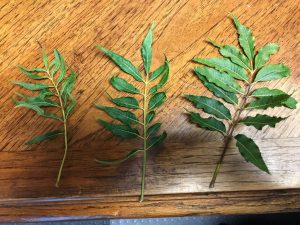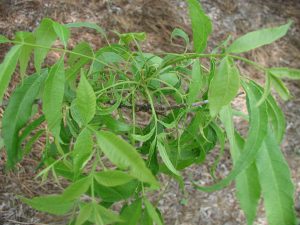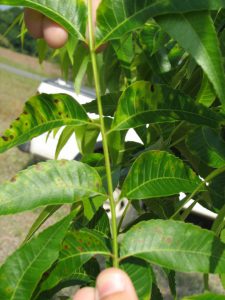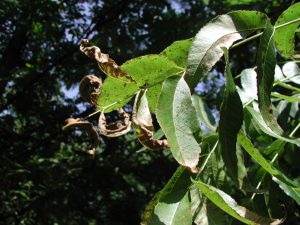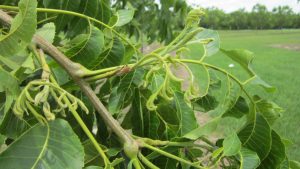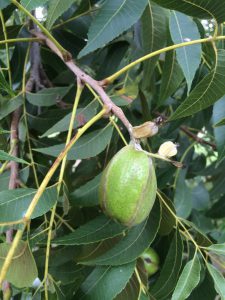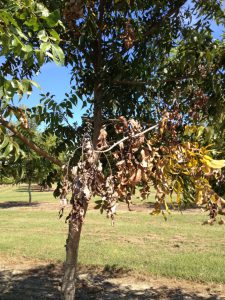Row crop planting has started in south Georgia and this means herbicide drift season has arrived. I have been on the road all week looking at drift-damaged trees. Since I cannot make it to every orchard in which this occurs, here are the steps that should be taken when a drift incident happens:
Glyphosate injury on both leaves to the left. ZInc deficiency on leaf to the right.
Glyphosate injury to pecan
If growers have had herbicide drift injury occur on their trees, they should first contact their county agent and take photos for documentation. The Georgia Department of Agriculture should also be contacted to take their own samples as soon as possible if a complaint will be filed. Many of these herbicides have a very short half-life and samples must be taken quickly in order to detect them in leaf tissue. The next step is to contact the neighbor from whom the drift originated and contact the neighbor’s insurance agency to notify them the incident occurred. Once everything has been documented it is usually a wait and see situation because of the high degree of variability from one case to the next. Often with glyphosate, glufosinate, paraquat, and flumioxazen, the injury is more cosmetic than economic unless there is extensive coverage, leading to significant leaf and flower/nut loss. Quality may also be affected if extensive foliage damage occurs because the trees must expend energy to re-grow new foliage. The only way to know the extent of damage for sure is to evaluate the crop at the end of the season. Repeated injury, of course, will lead to more serious losses and can cause long term damage to the trees.
Paraquat injury to pecan. Damage initially appears as yellowing of tissue and then turns brown and necrotic.
Older paraquat injury to pecan. All damaged tissue has turned brown and necrotic.
Dicamba and 2,4-d may throw a more complicated scenario into the equation. Based on data from the trials Dr. Eric Prostko and I have been conducting, injury from these materials, especially 2,4-D can be more serious if a high rate of the chemical makes direct contact with the tree’s tissue. In this case we have seen death of those branches that had direct contact. Once again, the degree of damage severity will depend on the rate and coverage. The same steps described above should be taken in the event of drift from these materials.
Initial appearance of auxin (2,4-D and dicamba) herbicide injury
Arrested nut development of terminals affected by auxin herbicide
Branch die-back from auxin herbicide injury

